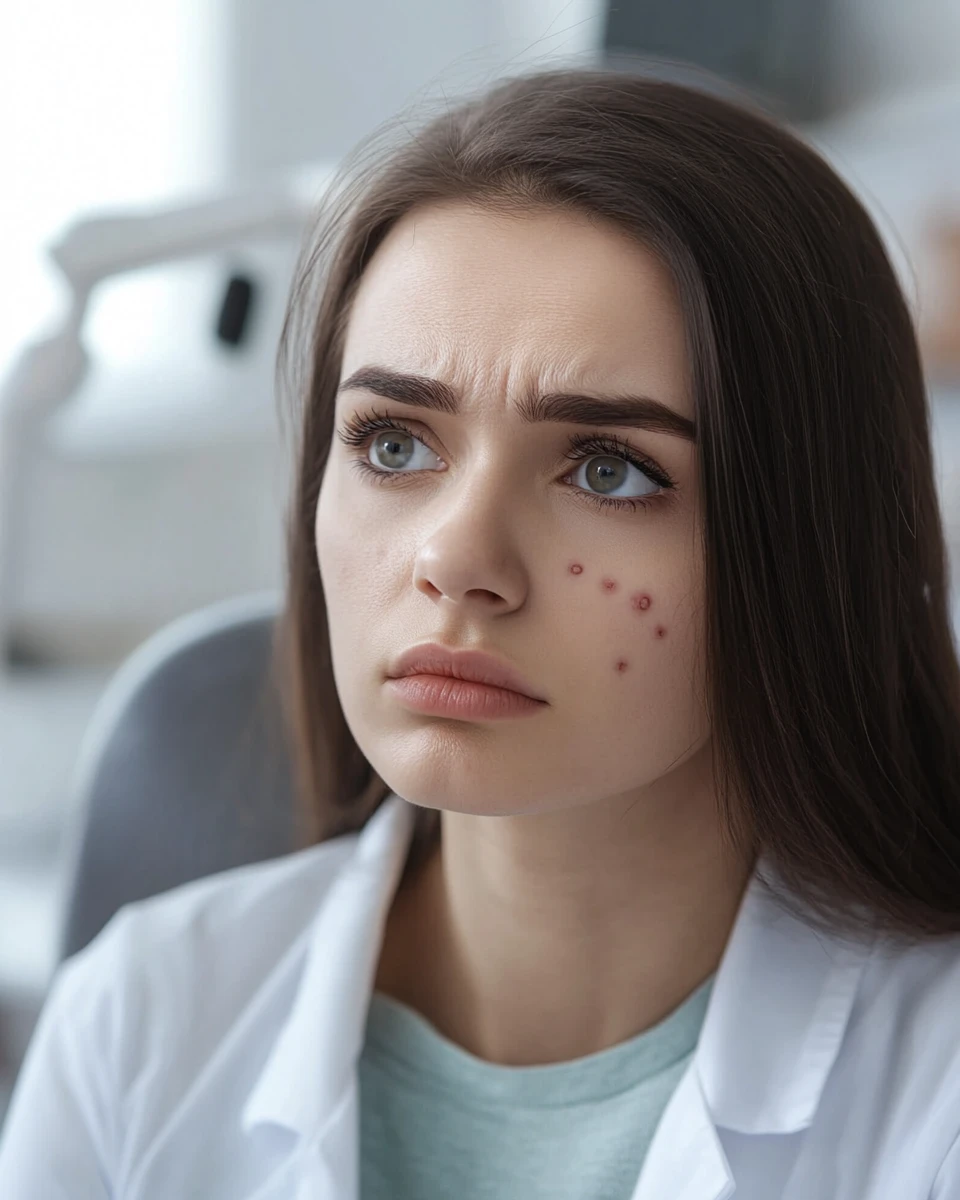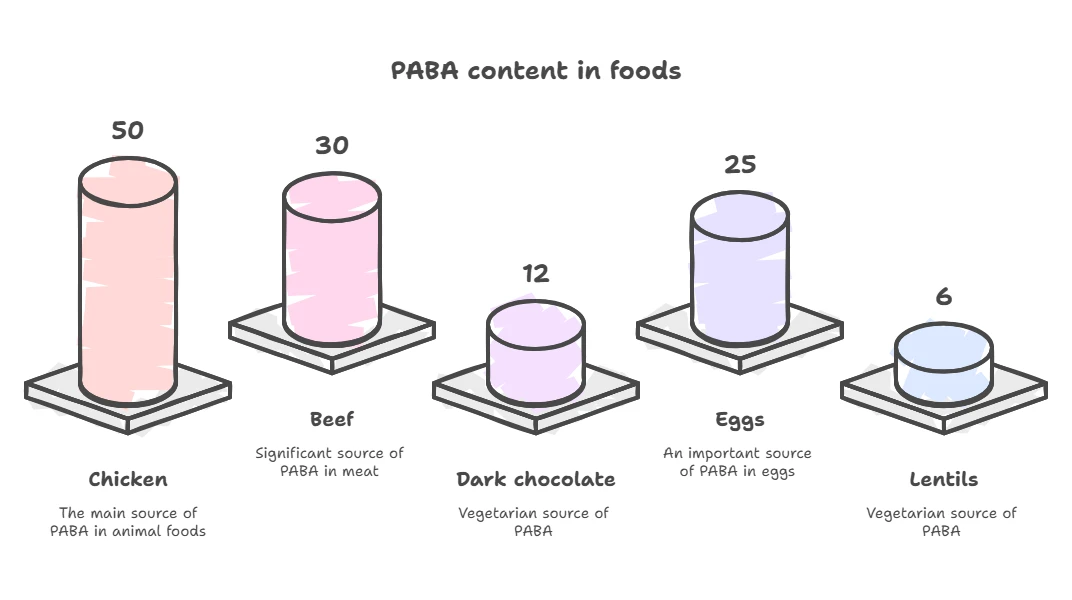

Para-aminobenzoic acid (PABA), or vitamin B10, is an essential element for the normal functioning of the human body.
Although this vitamin is not as widely known as other B vitamins, its role in metabolism as well as its effects on skin health, hair health, and overall body physiology cannot be underestimated.
In this article, we will discuss the basic functions of PABA in the body, its effects on metabolic processes, recent research, and possible deficiency states.
This knowledge will be useful for both health professionals and consumers interested in supporting health with vitamins.

Role of PABA in metabolism
PABA is a water-soluble vitamin that participates in the synthesis of folate (vitamin B9) and also plays a key role in the metabolism of amino acids and carbohydrates.
It is essential for the proper functioning of the nervous system and the maintenance of normal metabolism.
One of the important effects of PABA is its ability to activate enzymes that are involved in DNA synthesis.
This is important for cell division and tissue renewal, which contributes to the maintenance of normal skin and hair.
Studies have shown that PABA can affect cholesterol levels and improve liver function by supporting the liver in metabolic detoxification.

Effect of PABA on skin and hair health
One of the most interesting areas in which PABA plays an important role is skin health.
Vitamin B10 helps improve microcirculation, reduce inflammation, and promote skin cell repair. It is especially beneficial for people with acne and dermatitis.
Studies confirm that adding PABA to the diet helps reduce inflammation and accelerates the healing of damaged tissue, making it an important element in the therapy of skin diseases.

Recent research
More recently, research in the scientific community has confirmed the importance of PABA in the prevention and treatment of dermatologic diseases such as eczema and psoriasis.
One such study, published in the journal Dermatology Research and Practice, showed that the use of PABA in topical preparations can significantly improve skin conditions.
Other studies, such as those by the Nutrition & Metabolism team, have shown a link between PABA deficiency and poorer overall health.
People who are deficient in vitamin B10 are more likely to complain of fatigue, depression and skin problems.
PABA deficiency
PABA deficiency can manifest itself with a variety of symptoms, including skin rashes, hair loss, and worsening overall health.
This condition is rare, but in at-risk groups – such as vegans and people with digestive problems – it can be more common.
The appearance of such symptoms requires careful attention and possible inclusion of PABA-rich foods in the diet or the use of vitamin B10 supplements.

Table 1: Foods rich in PABA
| Product | PABA content (µg per 100 g) |
|---|---|
| Chicken | 50 |
| Beef | 30 |
| Dark chocolate | 12 |
| Eggs | 25 |
| Lentils | 6 |
As you can see from the table, various animal products such as chicken, beef and eggs are the main sources of PABA. Vegetarians can supplement their diet with lentils and dark chocolate to maintain normal levels of this vitamin in the body.
Table 2: Symptoms of PABA deficiency
| Symptoms | Possible consequences |
|---|---|
| Dry skin and hair loss | Deterioration of skin and hair |
| Fatigue and depression | Decreased quality of life, chronic fatigue |
| Digestive problems | Disorder of metabolism and microcirculation |
PABA deficiency can manifest itself both externally (e.g., dry skin and hair loss) and generally worsen overall health, leading to chronic fatigue and digestive problems. It is important to identify these deficiencies in time to avoid long-term consequences.

Conclusion
PABA, or vitamin B10, plays an indispensable role in maintaining healthy skin, hair, and normalizing metabolic processes in the body.
Despite its less popular role, its deficiency can affect overall health, especially skin function.
Recent studies emphasize the importance of PABA as part of a comprehensive approach in treating skin conditions and supporting overall health.
Literature
- A. H. Khoury, “The Role of PABA in Dermatology,” Dermatology Research and Practice, 2023.
- J. A. Smith et al., “Vitamin B10 Deficiency and Its Impact on Skin Health,” Nutrition & Metabolism, 2022.
- S. M. Harris, “PABA and its Effects on Metabolism: A Review,” Journal of Clinical Nutrition, 2024.




